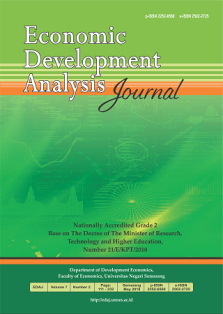Determinants of Poverty in Western Indonesia and Eastern Indonesia
Abstract
The diversion of regional characteristics in Indonesia costs the country countless economic issues, primarily poverty. This study aims to analyze the influence of gross regional domestic product, life expectancy, the average length of schooling, domestic investment, foreign direct investment, social protection spending, education sector spending, and health sector spending on poverty in Western Indonesia and Eastern Indonesia 2010-2021. Panel data regression was used in this study to examine data consisting of 34 provinces in Indonesia to annual data for each variable during the 2010-2021 period obtained from the Central Bureau of Statistics and affiliated institutions. The results of this study indicate that the best model is the Fixed effect, following the Chow and Hausman test. The results showed that the variables life expectancy, average length of schooling, domestic investment, foreign direct investment, and health sector spending had a significant negative effect on poverty. In comparison, gross regional domestic product, social protection spending, and education sector spending have a significant positive effect on poverty. Furthermore, from the results of the dummy variable, there is a significant negative difference between poverty in Western Indonesia and Eastern Indonesia in 2010-2021.


